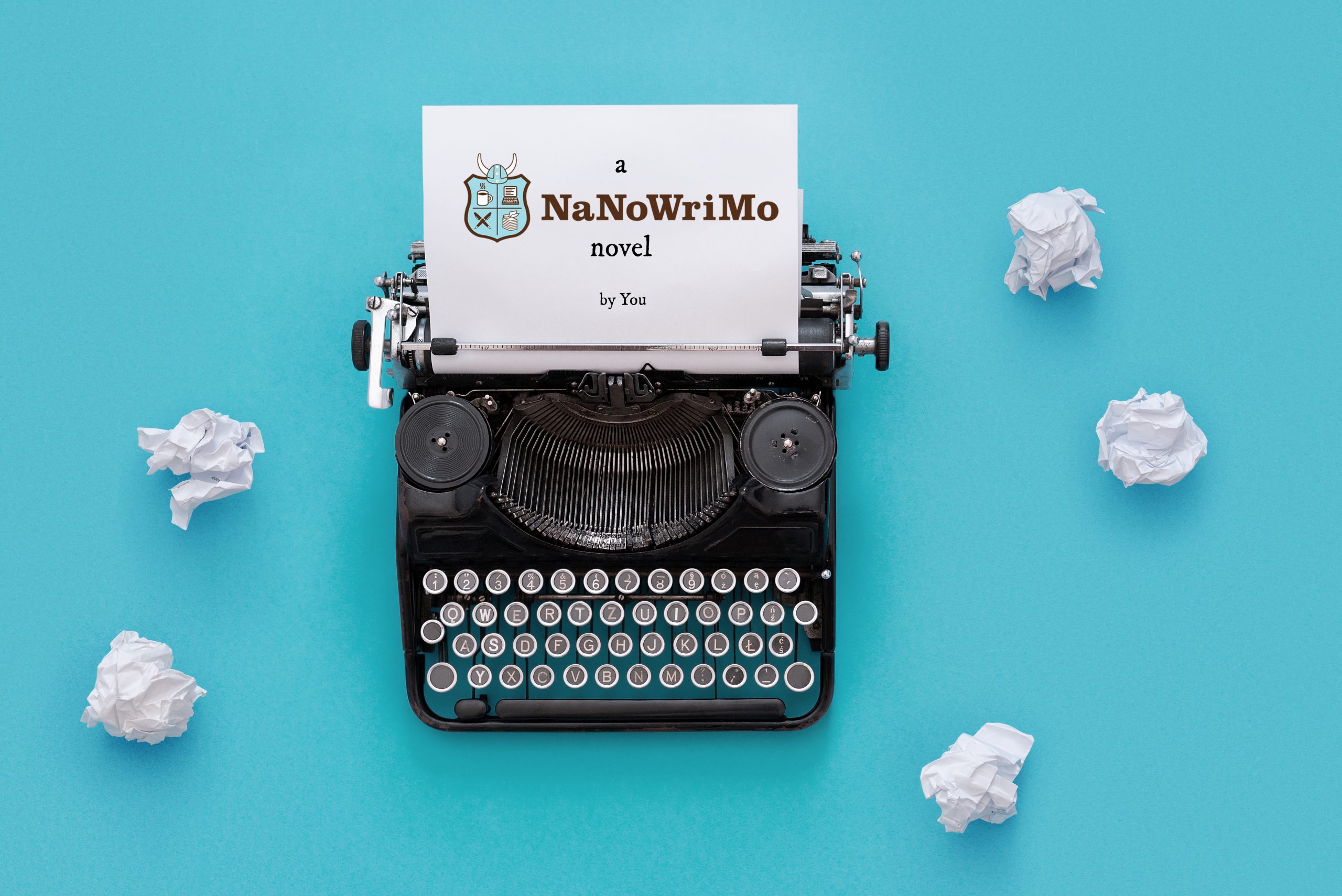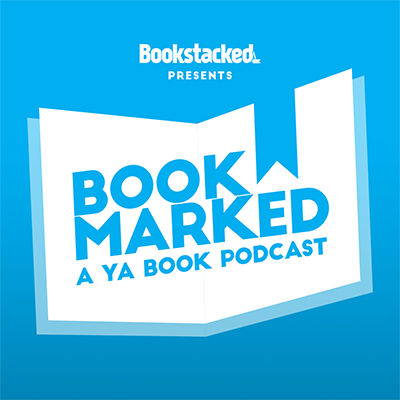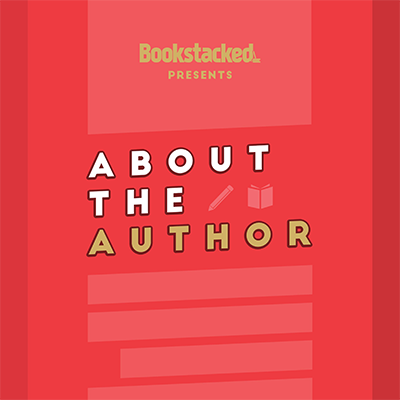Ever since I can remember I’ve wanted to be a writer. I don’t think I’m unique in that, especially not amongst YA readers. When we read the stories we love, many of us have an itch at the back of our minds, whether it’s a curiosity to understand how our favourite books come together, or like me, it’s just a desire to tell a story.
The perfect story.
I know, of course, that I never will write that perfect story — in fact, that’s part of the reason why I write so slowly; I spend so much time trying to come up with the story that I often neglect, you know, actually writing it. But that’s where the joy of NaNoWriMo comes in. The task is simple, really: write 50,000 words across the month of November. Abandon all of your distractions, all of your anxieties and fears about writing, and just write.
A brief history of NaNoWriMo

The movement was originated in 1999 by Chris Batty, who brought together 21 people to attempt the challenge with the expectation that they’d do it once, fail horribly, and the concept would never be tried again.
Every year since, the number of participants has grown (in 2020, over half a million writers participated in the program) and the challenge has been observed dutifully, encouraging amateur writers to set aside their presumptions about writing and just get the words and the story down on the page. On top of everything else, it’s generally just quite fun to sign up to the website and to share your progress with friends and likeminded writers.
But it’s not just amateur writers who attempt NaNoWriMo. Each year, many high-profile authors join in, with many writing guest posts for NaNoWriMo’s blog and newsletter to provide helpful insight into the actual craft of writing. Participating in NaNoWriMo has led to the writing and publication of books like Fangirl by Rainbow Rowell, Water for Elephants by Sara Gruen, and even Brandon Sanderson’s epic The Way of Kings.
It also has to be mentioned that, in 2006, NaNoWriMo officially grew into a non-profit organisation that runs year-round programs around the world. From their own mission statement, NaNoWriMo “believes in the transformational power of creativity” and “supports writing fluency and education.” The organisation provides tools, structure, community, and encouragement to help people find their voices and achieve their goals, and has a history of providing support ranging from helping increase child literacy in Southeast Asia to providing teaching resources and kits of materials to classrooms across America to encourage participation.
My experiences with NaNoWriMo
Last year, Bookstacked writer Chelsea Regan took on the challenge (and won!), chronicling her experiences here. For anyone doing NaNoWriMo this year, I absolutely recommend reading her articles, especially her final round-up article, for tips and inspiration on taking on the challenge.
I’ve attempted the challenge several times over the last 10 years or so, and am proud to announce that I’ve… never “won” NaNoWriMo. In all the times I’ve tried, I think that the furthest I’ve ever gotten was around 20,000 words. The way I see it, though, is that I’ve never failed NaNoWriMo. I don’t consider completing less than half of the goal to make me someone who’s “lost”; personally, I think there are very few, if any, ways to lose NaNoWriMo.
Coming out with 20,000 words of a story meant that I had 20,000 more words of a story than I would have had if I hadn’t tried at all. I just can’t see that as a failure.
(Strangely, though, while I haven’t completed NaNoWriMo officially, I have somehow managed to write a novel in just a little over a month. That was across December-January a few years ago, though, so I’m not sure I feel comfortable claiming it as an official NaNo win…)
At the very last minute, however, I decided that I am going to participate again this year. We discussed NaNoWriMo on the most recent episode of our podcast, and talking to my friends about it got me inspired to get writing again. I have no idea if I’ll actually be able to see the challenge out, or if I’ll even be able to reach the 20,000 mark that I checked out at before, but I’m very excited to try it again.
If you’re participating this year, come add me as a writing buddy on NaNoWriMo and we’ll try to help each other see it through to the end!

Advice for participating in NaNoWriMo
For any Bookstacked readers who are planning to try NaNoWriMo this year, whether it’s your first time or you’ve participated every year, I’ll leave with some brief advice.
I’m not a professional writer, however. I’ve never published a book and I’ve never completed the challenge of 50,000 words in November, so other than taking a creative writing course at university, I don’t really have any qualifications to sit and offer advice. But I am a person who’s written a lot in his life, whether I’m happy with what I’ve written or not. The thing about that is; whether what I’ve written is any good or not, I’ve always found it more beneficial to be unhappy with what I’ve written than to not have written anything at all. So that’s where my only real advice can come from.
Just write.
After that, just keep writing.
It’s a challenge to write 50,000 words of a novel in November, not a challenge to write a book that can be published on the 1st of December.
If you’re writing words down on the page, then you’re on the way to completing the challenge. Those words could be terrible (and, honestly, no offence, they probably will be—that’s what first drafts are for), they could be full of tropes and be badly structured and be boring and not go anywhere, with poor punctuation and run on sentences. But 1,666 trope-y words a day, or 1,000 words, or 500 words, is always going to be better than no words.
A last word
I think that, over time, the original goal of NaNoWriMo has become a little distorted; in my researching the history of the organisation, I was struck by the wording of the challenge: “to write 50,000 words of a novel during the thirty days of November.”
50,000 words of a novel, not a 50,000 word novel.
It’s a small thing, but I think that simple little bit of wording can ease a lot of the pressure that you might take into the month with you. You don’t need to write a full novel. You’re just aiming to write 50,000 words of one. Just write the second act. Just write the action scenes. Just write the dialogue. Just write the descriptions. Just write whatever you want, but don’t get overwhelmed by the fear of trying to write a perfectly structured, complete story in 50,000 words.
All there’s left to say is good luck with your writing. I can’t wait to read it one day.





Bookstacked Comment Policy
We welcome respectful comments. Our only rule is to be kind. Rude, hateful and generally mean-spirited comments will be removed.